A Dwindling Ecology
Throughout my stay in Mae Kor, a Karen village northwest of Chiang Mai city, villagers often emphasised the importance of the forest to their lives. “In the city, you have supermarkets. In Mae Kor, we have the forest. In the forest, we can gather vegetables and hunt animals for meat.” Paet, a 34 year old villager, quips. “Everything is free! No money is needed!” he added, grinning widely.
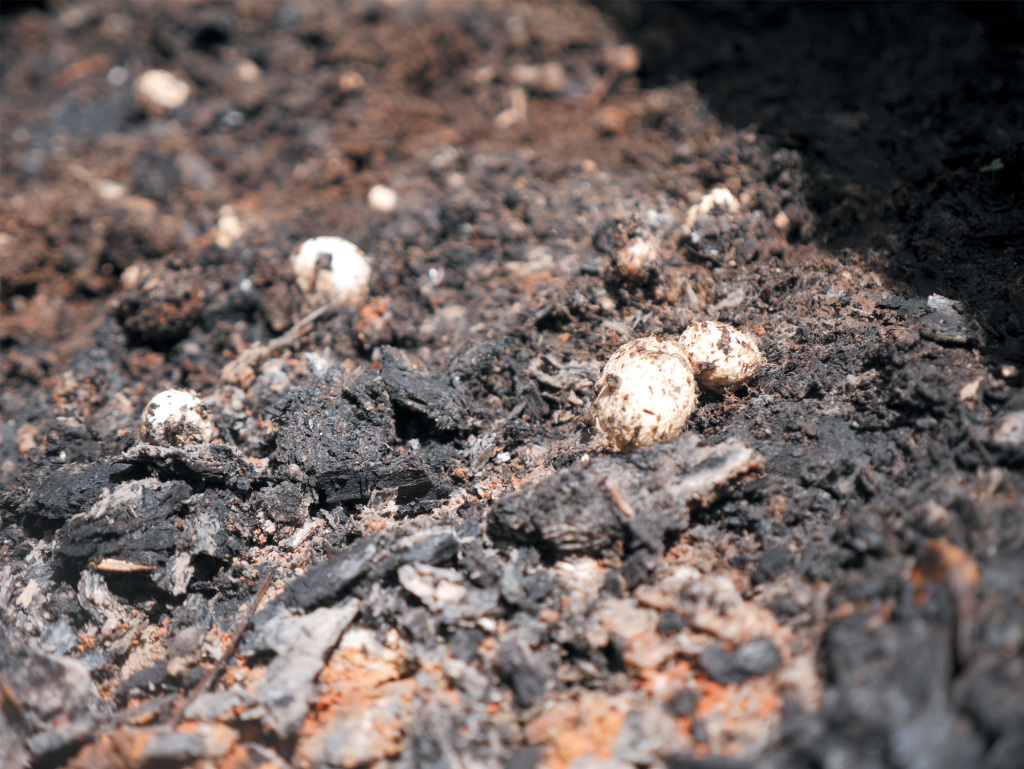
The “supermarket” in Mae Kor is undergoing a decline in both the quantity and variety of goods available. Animals that were traditionally hunted for food are increasingly scarce; with some species even completely disappearing from the forest. “We used to have forest chickens running everywhere. However, a few years ago, we found that many of them were lying dead on the forest floor. Today, there are none to be found anymore.” Lee Sah, 29, lamented: “The number of edible plants has decreased tremendously.
Now, we have many strange plants that we cannot eat sprouting up in the forest!” Traditionally, the Karen have seen themselves as stewards of the forest. Witnessing the degradation of the forest must feel like seeing their homes destroyed.
The villagers in Mae Kor are acutely aware of what causes the blight that afflicts their forest. The disappearance of native forest fauna started ten years ago, when corn farming was introduced. Corn farming requires the use of large quantities of polluting chemical fertilisers, pesticides and herbicides.
These chemicals seep into the soil and water, contaminating the nearby forest. Chemical pollution effects not just the health of the forest, but also that of the people living in Mae Kor. “We used to be able to drink water from the streams. We cannot do so anymore. The water is poisoned. People are also falling sick more,” says Anake, a villager with a university degree in agriculture. Indeed, Mae Kor now relies on a watershed five kilometres away from the cornfields for their drinking water. The cost of the government-funded project to bring water from this watershed is astronomical (in village terms) 18 million baht, due to the large distance the pipes have to cover.
Good Intentions
Without an understanding of the harsh realities of everyday village life, it is easy for critics to censure the villagers for succumbing to greed, and planting corn and polluting the environment. Prior to corn farming, villagers in Mae Kor survived primarily on subsistence agriculture. They sold their meagre surplus crops for income, which was used mainly for basic necessities. However, with the increasing emphasis on the importance of education, subsistence farming is inadequate to cover schooling and associated costs.
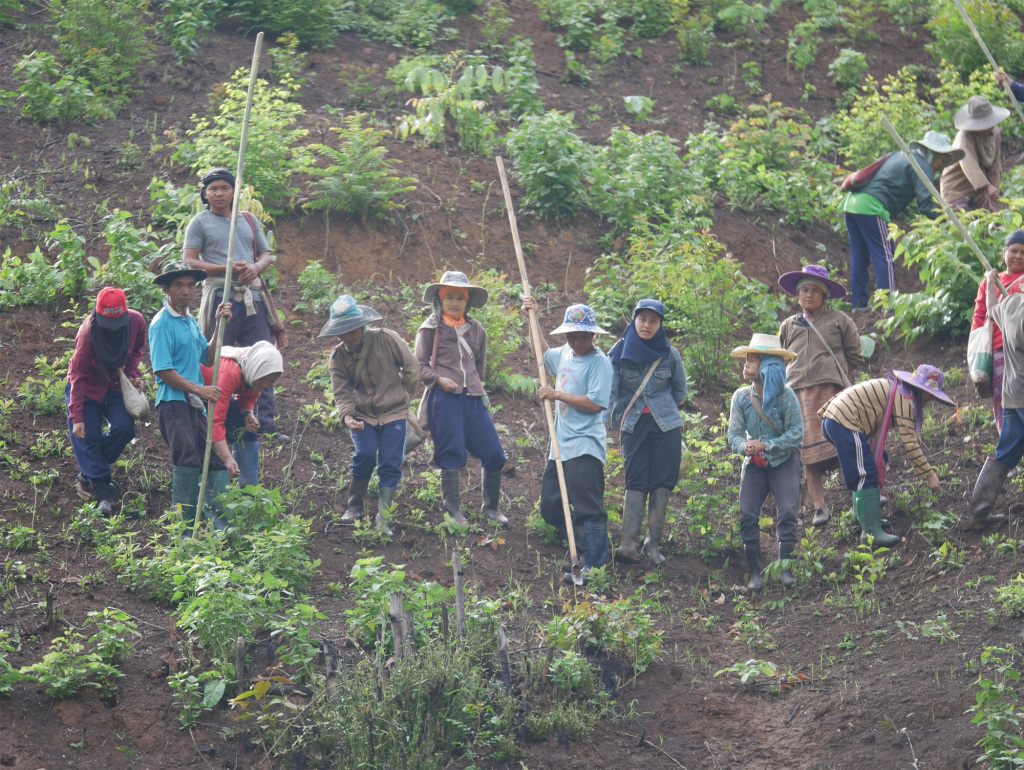 Villagers needed significant sources of income or rare education scholarships, to pursue studies beyond Mathayom 6.
Villagers needed significant sources of income or rare education scholarships, to pursue studies beyond Mathayom 6.
To many villagers, education for their youth has become a necessity. Since 1955, the number of households in Mae Kor has increased from four to 87. However, due to anti-deforestation laws prohibiting the expansion of farmlands, the amount of farming land per person has decreased greatly. Staying in the village to farm is no longer an economically viable option for many young people, and as such, many leave the village to seek work. Education is also seen as a ticket to a better life beyond the village, which is something that many parents wish for their children. “I do not want my children to be farmers like me. It is really hard work, and there are [economic] risks involved. I want them to work with their heads and not their hands.” Noi, a mother of two said.
Indeed, education has brought significant social mobility to the people of Mae Kor. After graduation, many of the youth move on to professional careers, including education, law and business. A glance into the villagers’ humble homes reveals photographs of their children in graduation robes, which they take pride in tremendously. Levels of education have soared since corn was introduced as a cash crop. In 2015, 21 villagers from Mae Kor have graduated with bachelor degrees, and two have even obtained master’s degrees.
A Crop of Debt
What all this amounts to is a stark choice. In Mae Kor, many parents make the tough decision to poison their lands so as to send their children to school. Many of them view corn farming as a temporary evil, which they will stop once their children graduate. Unfortunately, many of them get trapped in a cycle of debt, and have to continue planting corn even after their children’s graduations. “I am tired of planting corn.” Suboloh, a 53-year-old villager lamented. “I started planting corn to send my children to school.
Now they have graduated, but I am still in debt, so I have to keep planting corn.”
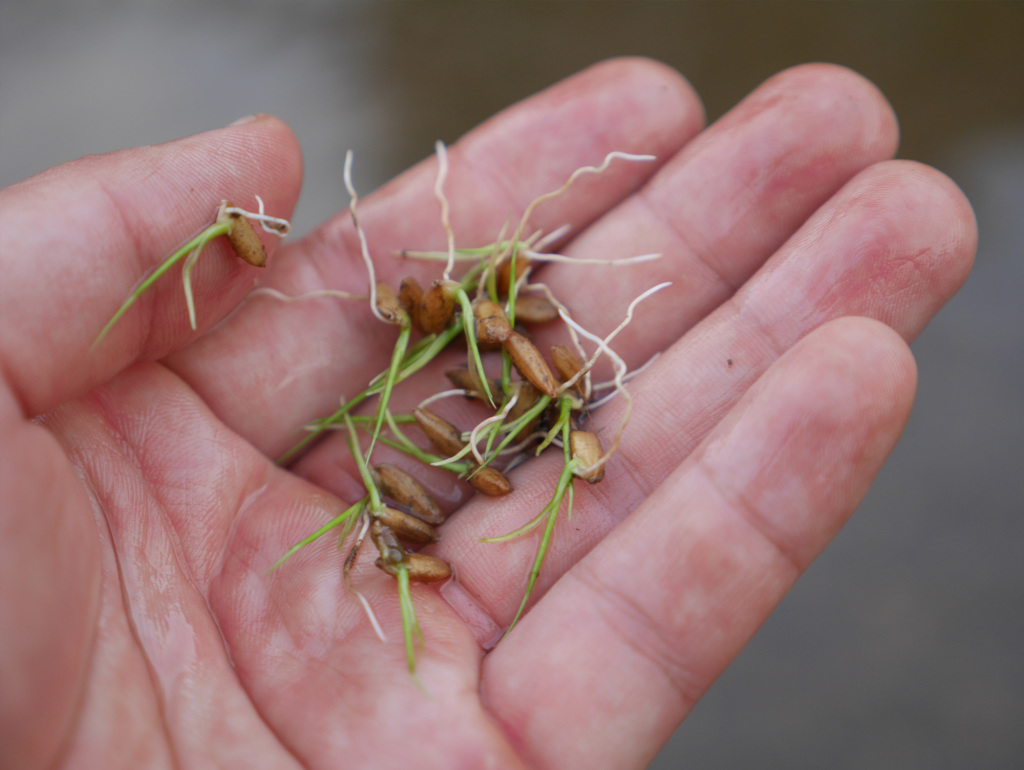 When corn farming was introduced ten years ago, the villagers, lacking legal land titles, had no access to loans from the Thai Agricultural Bank. In order to fund their initial capital investments for corn planting, they resorted to borrowing from illegal moneylenders. Though seemingly a quick and relatively simple solution, the compounded interest rates ballooned when the harvests were unexpectedly poor due to unstable corn yields and fluctuating corn prices. Villagers then realised that their debt was huge and increasing exponentially. Based on a three percent per month interest rate, the amount payable for a 100,000 baht loan shoots up to over 200,000 baht after 24 months. In some cases, the interest rates could even be as high as 20 percent a month. More recently, legal loans have alleviated the debt problem. Villagers could borrow from the Agricultural Bank to pay the illegal moneylenders. However, by then, the debt had already grown and villagers remain trapped in a vicious cycle of debt.
When corn farming was introduced ten years ago, the villagers, lacking legal land titles, had no access to loans from the Thai Agricultural Bank. In order to fund their initial capital investments for corn planting, they resorted to borrowing from illegal moneylenders. Though seemingly a quick and relatively simple solution, the compounded interest rates ballooned when the harvests were unexpectedly poor due to unstable corn yields and fluctuating corn prices. Villagers then realised that their debt was huge and increasing exponentially. Based on a three percent per month interest rate, the amount payable for a 100,000 baht loan shoots up to over 200,000 baht after 24 months. In some cases, the interest rates could even be as high as 20 percent a month. More recently, legal loans have alleviated the debt problem. Villagers could borrow from the Agricultural Bank to pay the illegal moneylenders. However, by then, the debt had already grown and villagers remain trapped in a vicious cycle of debt.
Villagers often turn to credit companies when they are unable to repay the banks. These companies, well aware of the demand for credit, spare no effort in marketing their loan packages. Their advertisements dominate the airtime on local radio stations, and banners promising easily accessible financing line the roads in Mae Chaem District. While their short-term loans help villagers tide over their debt until the next corn harvest, the exorbitant interest rates erode the villager’s incomes, keeping them mired in debt.
Besides the moneylenders, even merchants for chemical fertilisers, pesticides and corn seeds have caught on to the lucrative business of debt. They offer delayed payment packages, allowing the farmers to pay only after they have sold their corn harvest. While a bag of corn seed costs 1,000 baht upfront, it could cost 1,300 baht if purchased under a delayed payment agreement. To a debt-ridden farmer, this is an unpleasant choice, albeit one that beats not having any corn to plant at all.
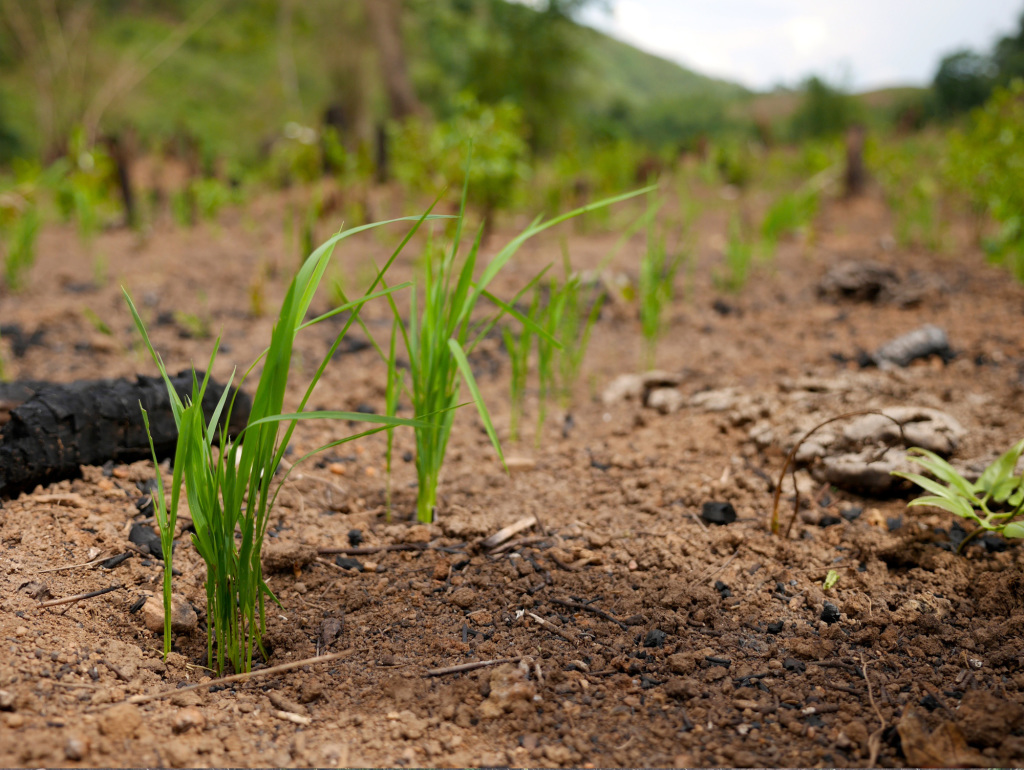 Outside of debt, the rising costs of corn farming have also greatly eroded the farmer’s profits. Rising costs are attributed to the purchase of corn seeds and transportation costs, eventually siphoning the farmers’ profits significantly. This is aggravated by the price discrimination they face. A farmer laments: “In the shops, the Thai people get lower prices than us. Just because we are Karen, they charge us more!”
Outside of debt, the rising costs of corn farming have also greatly eroded the farmer’s profits. Rising costs are attributed to the purchase of corn seeds and transportation costs, eventually siphoning the farmers’ profits significantly. This is aggravated by the price discrimination they face. A farmer laments: “In the shops, the Thai people get lower prices than us. Just because we are Karen, they charge us more!”
Alternatives to Corn
“I don’t want to plant corn anymore, but I do not know what else to plant!” A villager bemoaned. His complaint about not having an alternative crop to plant is a common one. Although Mae Kor is only 60 kilometres west of Chiang Mai, the journey on the windy and bumpy mountain roads to Chiang Mai takes over four hours. Being geographically isolated means that access to the large city markets is limited. It also means much higher transportation costs, which prevent Mae Kor from competing with others.
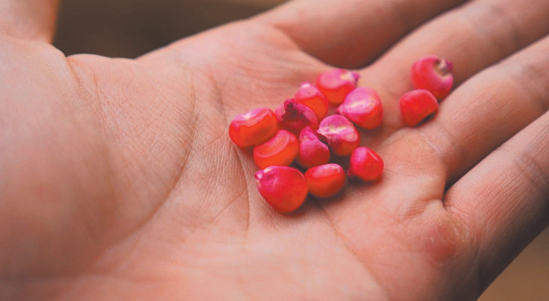
Furthermore, Mae Kor’s isolation results in poor knowledge about market trends and demand. In the absence of a viable alternative, the villagers continue planting corn, which despite the high costs and the negative environmental impacts, has guaranteed buyers.
Before corn farming, rice used to be the primary cash crop in Mae Kor. Today, only 20 percent of farming land in Mae Kor is reserved for rice planting. The rice is mainly for subsistence, with the exception of a small amount sold at low prices to neighbouring villages or visiting middlemen. The low bargaining power of the sellers depresses the prices of rice to between 10 to 13 baht per kilogram, rendering it an unattractive option as a cash crop. Moreover, the lack of access to larger rice markets often means that buyers are not always available.
I believe that gaining access to new markets could make rice a commercially viable cash crop for the villagers in Mae Kor. This could eventually reduce their reliance on corn farming, thereby allowing them to avoid the various negative externalities associated with corn. Besides being an economically feasible crop to grow, rice is also suitable, as unlike corn, it is compatible with Karen cultural beliefs.
Hope in Tradition
The people in Mae Kor have a proud tradition of rice farming. On many occasions, villagers spoke of seeds and farming methods passed down over generations since their ancestors’ times. “These are the same seeds our ancestors planted,” exclaimed a young villager, Pa-jin, clutching a handful of golden grains. “When I travelled to the city, I really missed the rice here. I want people outside to taste our delicious rice!” Like him, many villagers take great pride in the quality of their rice. “Our rice is well-known in neighbouring villages. Some Hmong people travel long distances just to buy our rice!” exclaimed another villager.

In many Karen villages that practice Animism and idol worship, rice deities and rice-related rituals are ubiquitous. Although the people in Mae Kor have shed Animism in favour of Christianity, and do not worship rice deities anymore, many cultural practices still reflect how rice has a spiritual role in their lives. For example, it is considered bad manners to lie next to a family’s rice stores. Also, stepping over a container of rice is frowned upon.
From an ecological perspective, rice is a good alternative to corn. The varieties of rice planted in Mae Kor have adapted to local conditions over many generations, and as a result, are more resistant to pests and diseases, rendering chemical pesticides unnecessary. Also, over generations, local pest-control methods have been developed. Pa-jin shared one such method: “pomelo peels help to drive away the insects (a kind of rice weevil). These insects do not like the smell secreted by the peel.”
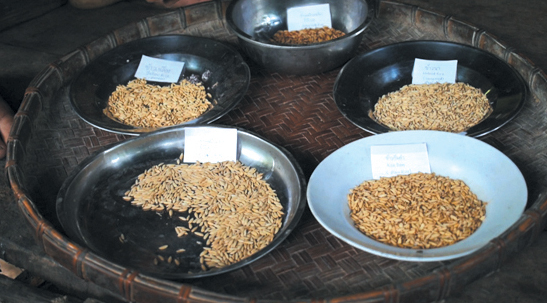 Rice farming is a communal activity in Mae Kor, and villagers take turns to help on each other’s farmlands. As Mae Kor is situated on undulating terrain, the rice is planted on steep slopes. Farmers have to ascend steep slopes for weeding, sowing and harvesting, often under the scorching sun. Despite the arduous work, the farmers carry on with their tasks with smiles on their faces. After all, they are not toiling alone. While taking a break from their work, the villagers chat happily, bonding over a simple meal of rice and gravy. “Planting rice brings us all together!” an elderly villager said cheerily.
Rice farming is a communal activity in Mae Kor, and villagers take turns to help on each other’s farmlands. As Mae Kor is situated on undulating terrain, the rice is planted on steep slopes. Farmers have to ascend steep slopes for weeding, sowing and harvesting, often under the scorching sun. Despite the arduous work, the farmers carry on with their tasks with smiles on their faces. After all, they are not toiling alone. While taking a break from their work, the villagers chat happily, bonding over a simple meal of rice and gravy. “Planting rice brings us all together!” an elderly villager said cheerily.
As a member of a rice-eating Singaporean family, I have consumed many different kinds of rice, including Thai Jasmine Rice, Japanese rice, and long-grained Indian Basmati rice. Mae Kor rice is unlike any of the types of rice I have eaten. In terms of texture, it is like Japanese rice, slightly sticky, yet soft. There is also a faint sweetness on the palate, and a pleasant aroma, creating a full flavour that makes it delicious even on its own.
Mae Kor Rice
In June, with help from students from the National University of Singapore and Chiang Mai University, Mae Kor established a village cooperative to market and sell their rice. The cooperative will purchase rice from the villagers, and take charge of the processing and packaging. Thereafter, the cooperative will take orders from customers through email, and deliver rice by local post.
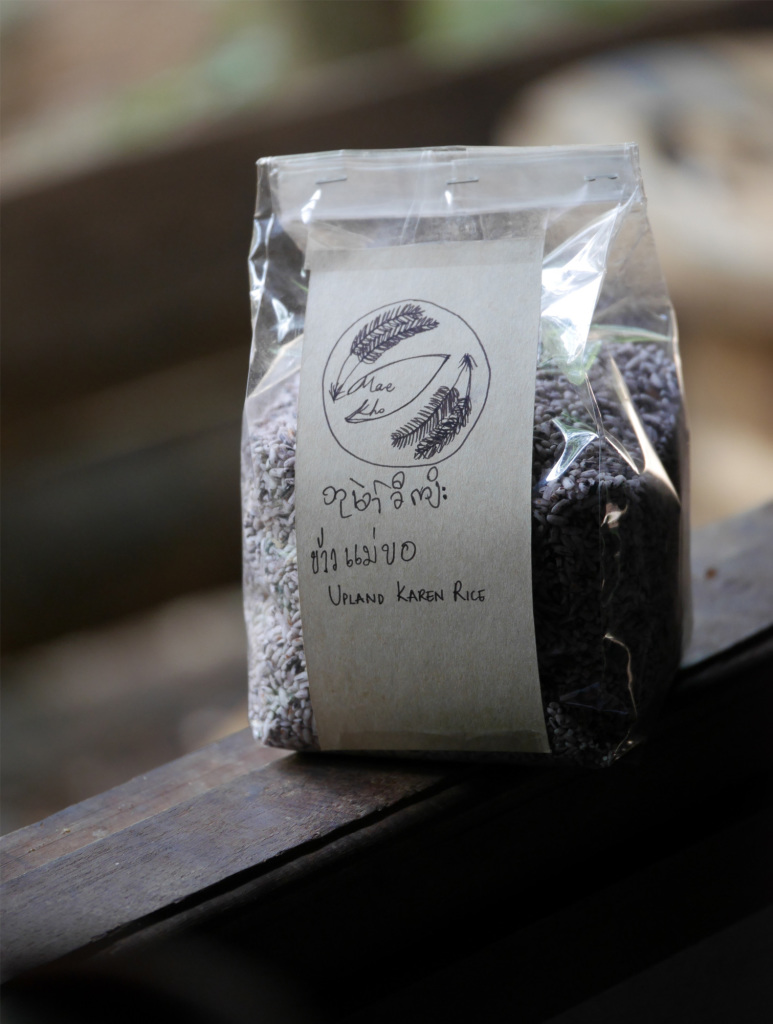 Mae Kor Rice can provide an alternative source of income for villagers, thereby reducing and hopefully eliminating corn farming altogether. It also provides job opportunities for villagers, who can participate in processes like packaging and delivery. With rice as a primary cash crop, environmental pollution brought about by corn can be minimised, sparing the locals the unenviable choice between not having education and befouling their lands with commercial farming. As the cost of rice farming is minimal, and varieties of seeds are already available in every household, rice farming also shields the villagers from exploitative corn farming financiers and merchants. Lastly, encouraging rice as a cash crop can perpetuate the traditions and local knowledge of the Karen people, allowing them a means of development that sustains their cultural beliefs.
Mae Kor Rice can provide an alternative source of income for villagers, thereby reducing and hopefully eliminating corn farming altogether. It also provides job opportunities for villagers, who can participate in processes like packaging and delivery. With rice as a primary cash crop, environmental pollution brought about by corn can be minimised, sparing the locals the unenviable choice between not having education and befouling their lands with commercial farming. As the cost of rice farming is minimal, and varieties of seeds are already available in every household, rice farming also shields the villagers from exploitative corn farming financiers and merchants. Lastly, encouraging rice as a cash crop can perpetuate the traditions and local knowledge of the Karen people, allowing them a means of development that sustains their cultural beliefs.
All villagers’ names have been changed to protect their privacy.
To support Mae Kor’s quest to offer an alternative to corn crops, check out www.facebook.com/MaeKorRice
